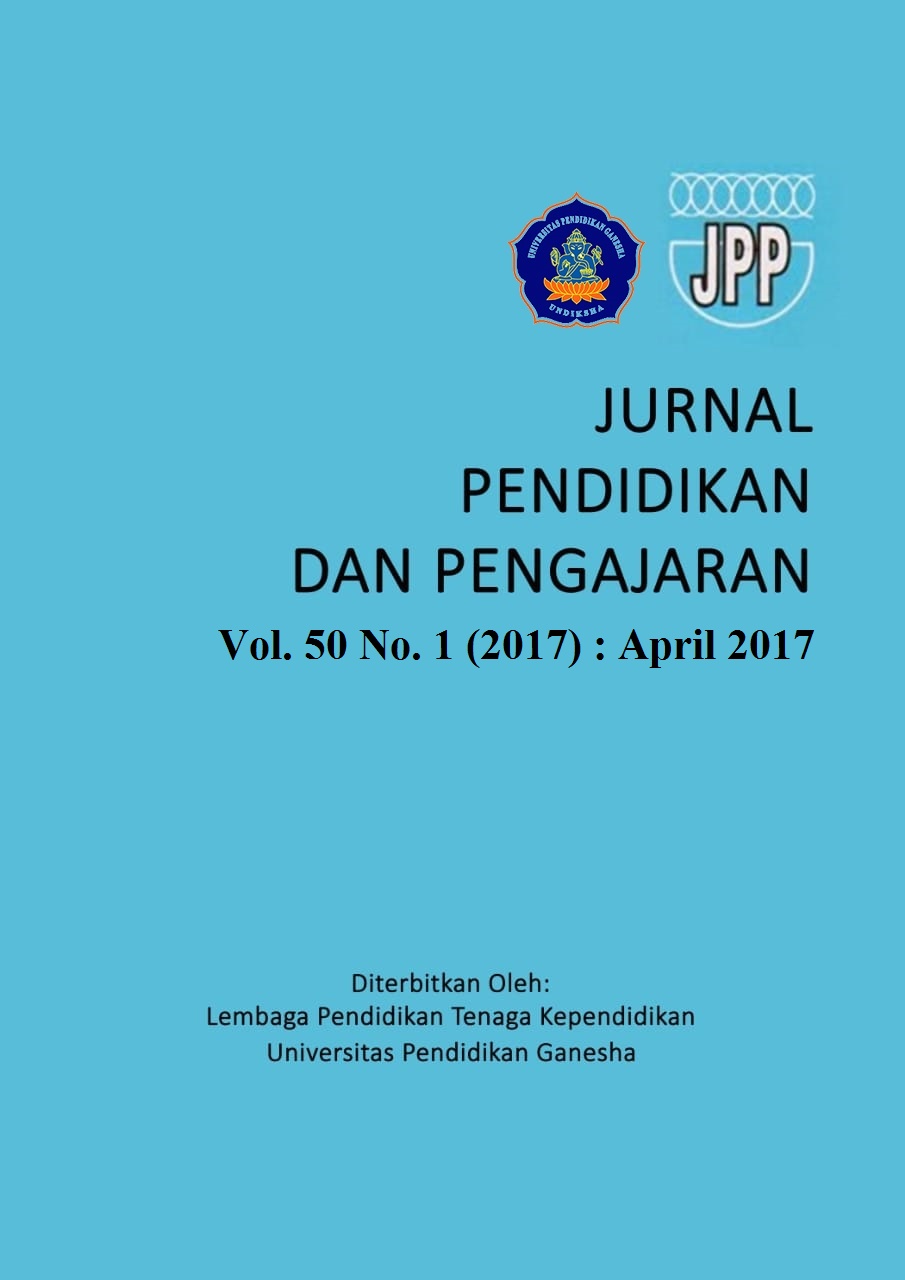THE DEVIATION OF WORDS ASPECTS AND SENTENCES AMONG STUDENTS’ SPEECH
DOI:
https://doi.org/10.23887/jpp.v50i1.10093Keywords:
analysis of spoken language, sentence aspect, word aspectsAbstract
This study was aimed at describing the misuse of spoken Bahasa Indonesia by students of Universitas Pendidikan Ganesha in terms of words and sentences. This study was descriptive qualitative research. Sources of data in this study were students taking Bahasa Indonesia subject as a part of Personality Development Course. Data collection method used was observation and documentation. Three stages of data analysis were implemented for this study, namely: data reduction, data presentation, and inference and verification. Techniques used in checking the validity of the data and the data saturation is the persistence of observation and data triangulation. The results of this study were (1) the misuse of spoken Bahasa Indonesia seen from word aspects includes (a) the misuse in pronunciation (phonology); (B) the misuse of words (lexical); (C) variations of word; and (d) the misuse of word formation (morphology); (2) the misuse of spoken Bahasa Indonesia seen from sentence aspects includes (a) contamination sentences; (B) pleonastic sentences; (C) ambiguous sentences; and (e) illogical sentences. The results of this study can be taken into consideration in the selection of teaching materials for students.References
Alwasilah, Chaedar. 1985. Sosiologi bahasa. Bandung: Angkasa.
Alwasilah, Chaedar. 1993. Linguistik Suatu Pengantar. Bandung: Angkasa.
Aslinda dan Leni S. 2007. Pengantar Sosiolinguistik. Bandung. PT Refika Aditama.
Badudu, J.S. 1981. Pelik-pelik Bahasa Indonesia. Bandung: Pustaka Prima.
Badudu, J.S. 1996. Inilah Bahasa Indonesia yang Benar III. Jakarta: Gramedia.
Bungin, Burhan (Ed.). 2006. Metodelogi Penelitian Kualitatif. Jakarta: PT Raja Grafindo Persada.
Dewi, Ni Putu Juniana. 2013. Wujud Kesalahan Bahasa Guru Bahasa Indonesia SMP Laboratorium Undiksha: Tinjauan Aspek Struktur dan Diksi. Skripsi. Singaraja: Universitas Pendidikan Ganesha.
Dibia, I Ketut dan I Putu Mas Dewantara. 2015. Bahasa Indonesia Keilmuan. Singaraja: Undiksha Press.
Gunatama, Gede dan Ida Bagus Putrayasa. 2008. “Penyimpangan-Penyimpangan Pembentukan Kata dalam Kamus Umum Bahasa Indonesia: Sebuah kajian morfologi
Pateda, Mansoer. 1989. Analisis Kesalahan. Flores: Nusa Indah.
Purnamayani, Ni Md. Desy. 2014. Analisis Kesalahan Bahasa Diskusi dalam Pembelajaran Bahasa Indonesia Siswa Kelas XI di SMA Negeri 1 Sukasada (Skripsi). Singaraja: Universitas Pendidikan Ganesha.
Putrayasa, Ida Bagus. 2007. Kalimat Efektif (Diksi, Struktur, dan Logika). Bandung: Refika Aditama.
Suharianto, S. 1981. Kompas Bahasa: Pengantar Berbahasa yang Baik dan Benar. Surakarta: Widya Duta.
Sukardi. 2000. Interferensi Bahasa Indonesia Ke Dalam Bahasa Jawa Dalam Mekar Sari. Jakarta: Departemen Pendidikan Nasional.
Sumadiria, Haris. 2010. Bahasa Jurnalistik: Panduan Praktis Penulis dan Jurnalis. Bandung: Simbiosa Rekatama Media.
Tarigan, Henry Guntur. 1990. Pengajaran Remidi Bahasa. Bandung: Angkara.
www.unicef.org. tt. “Bahasa Tubuh dan Intonasi”. Dalam http://www.unicef.org/indonesia/id/14_Modul_13_Bahasa_Tubuh_dan_Intonasi.pdf. Retrieved 17 September 2016.
Downloads
Published
How to Cite
Issue
Section
License
Authors who publish with Jurnal Pendidikan dan Pengajaran agree to the following terms:- Authors retain copyright and grant the journal the right of first publication with the work simultaneously licensed under a Creative Commons Attribution License (CC BY-SA 4.0) that allows others to share the work with an acknowledgment of the work's authorship and initial publication in this journal
- Authors are able to enter into separate, additional contractual arrangements for the non-exclusive distribution of the journal's published version of the work (e.g., post it to an institutional repository or publish it in a book), with an acknowledgment of its initial publication in this journal.
- Authors are permitted and encouraged to post their work online (e.g., in institutional repositories or on their website) prior to and during the submission process, as it can lead to productive exchanges, as well as earlier and greater citation of published work. (See The Effect of Open Access)





